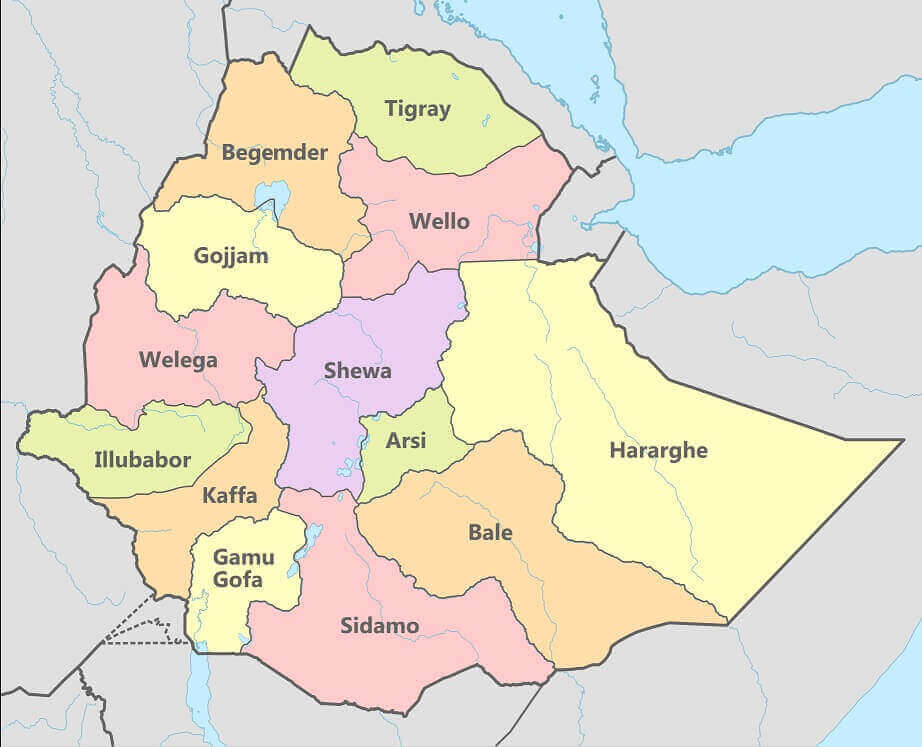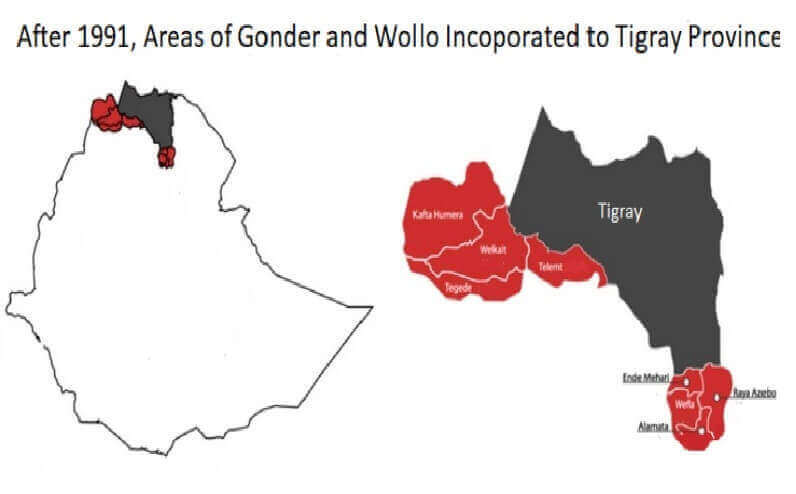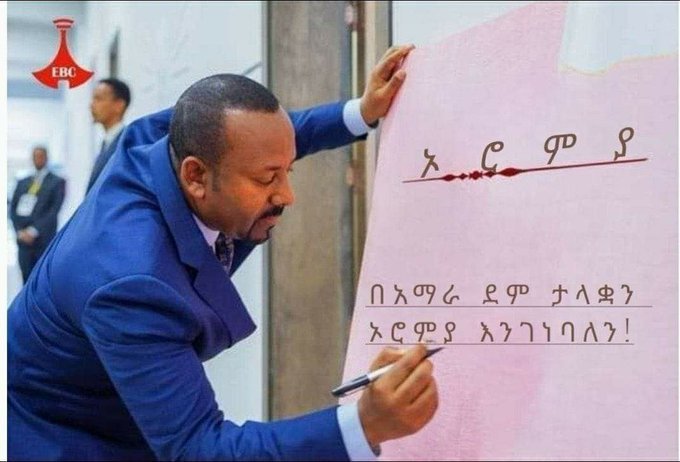By Mengesha Yohannes
In current Ethiopian politics, there are many players involved in a game called the Welkait area game. The Welkait area is the area that includes the four places: Humera, Welkait, Tegede and Tselemt. For the people who have lived there for generations, it is not a game; it is a matter of existence and freedom. Whereas for those engaged in Ethiopian politics, playing the Welkait game has become like playing a chess game. There are many forces with different interests involved in the area. The Welkait people, the TPLF, the current Oromo elite-led government, the neighboring countries Eritrea and Sudan, as well as the Ethiopian historical enemy Egypt, all have their interests in the area. The Middle Eastern countries also have some interest in the area for different reasons. Westerners led by the US, including the former colonialists of Egypt and Sudan, the UK, had/have a say in the area. As the days go by, playing this game has become more complex and it demands a subtle strategy. The game is not for the short sighted, faint-hearted or the silly-minded.

Historical Context
During the reign of Emperor Haile Selassie and the Derg Regime led by Mr. Mengistu, Welkait was a part of the regional administration known as Begemder or Gondar for approximately 60 years. Prior to the consolidation of power by the Derg regime, numerous rebel groups, including the Ethiopian People’s Revolutionary Party (EPRP), the Ethiopian Democratic Union (EDU), and later the Tigray People’s Liberation Front (TPLF), were hiding in the area and actively rebelling against the central government. Additionally, the Eritrean People’s Liberation Front (EPLF), also known as Shabia rebels, had various forms of collaboration with these groups at different times in the vicinity of Welkait. The influence of these forces has significantly impacted the political landscape of Ethiopia and Eritrea over the past three decades.

The region presented a distinct opportunity for individuals seeking refuge. It served as a strategic pathway to Tigray, Wello, and Gondar through the Ras Dejen mountain complex, known as the Semen Mountains. Moreover, it provided an escape route to Sudan, evading the control of the central government forces. Consequently, many sought refuge in Sudan before eventually fleeing to the United States and other Western nations. This allowed them to establish communication channels with external forces harboring ambitions to destabilize the country. Additionally, they were able to smuggle in weapons and various resources. Notably, both the EPRP and TPLF found sanctuary in Tselemt, where the Derg regime had limited control for a span of 17 years. The local farmers were well acquainted with the young rebels from both groups, who later emerged as leaders. Welkait played a crucial role in mobilizing Amhara farmers and other Ethiopians to unite against the Derg regime, thus building momentum for its downfall. It is important to acknowledge that without the support of the Amhara people, assuming power in Ethiopia would be an implausible feat.

The TPLF also operated a radio station in that location, which played a significant role in shaping the propaganda campaign against the Derg regime. Through this area, the TPLF received support from Shabia, Sudan, and Egypt. The Welkait corridor was crucial for the TPLF to collaborate with the UK, US, and EU in effectively dismantling the Soviet Union-backed Derg regime. This place holds great importance not only at a political level but also on a personal level for many individuals. It even served as a romantic location for rebel fighters, with numerous couples emerging from their time in the area. Azeb Mesfin, the late Meles Zenawi’s wife, hails from Welkait. After assuming control of the central government in 1991, the TPLF finally incorporated the area into the administration of the Tigray region. It is the TPLF’s presence that has made this area particularly sensitive; otherwise, it would be similar to other northwestern Ethiopian border places like Metema and others. In fact, without the TPLF as a formidable political force, the complexity of the Welkait situation would somewhat diminish.
Players of the Welkait Area game
- The People of the Welkait Area. Just go and do a genuine deeper anthropological study. You will find people who have been there for centuries. Since it is area where Sudan, Eritrea and Ethiopia meet, you might get a mixed culture. Otherwise in large part it is more related to the rest of Begemidir (Gondar) culture. People from Tigray, Eritrea and the rest of Ethiopia have been living there too. Since the area is known for its “fertile alluvial soil, which grows cash crops such sesame, cotton and also sorghum.” So, first of all, the people in the Welkait area, the Wilkeite’s were/are fighting for their existence and freedom. They were resisting imposed identity by TPLF. Even during the TPLF leadership, under the country’s constitution, they were organizing peaceful struggle resisting the decision of the government. However, during the two year conflict of the existing government and TPLF forces, the people took the opportunity and took back the area out of the control of TPLF forces.
- TPLFites have their eye on the Welkait area – they call it “Western Tigray.” Even though TPLF started its struggle in Dedebit, on the other side of Tekeze river, almost all the 17 year struggle of TPLF against the Derg regime was based in Welkait area too. That presence together with 27 years of dominating Ethiopian politics, TPLF managed to annex the area to Tigray region before setting up the country’s constitution. Further, thirty years was enough to change the demography, culture and language of the area and make it part of Tigray. However, the people there were resisting it for long and they managed to fight back and claim their existence and freedom. Make no mistake, there are many thousands of people of Tigray origin who have made their home in the Welkait area for decades, even some may be for centuries. The people were living in harmony. The existing conflict that destroyed the harmony of the people living there is created by the ethnic based politics that TPLF introduced in the country. If there was no ethnic based demarcation, the people there would not fight against each other. They could have continued without problems for eternity.
TPLF has/had the vision of creating an independent Tigray nation, like that of the Eritreans. For that to happen, they needed to establish a border with Sudan. Hence, Welkait is an integral part of their strategy. The Welkait area also has economic advantages. They can produce many foreign currency generating crops like as mentioned above. They believe in Darwin’s Theory of the survival of the fittest – and they take the area by force. As they say – አወትና በቃልስና.
In addition, in over forty years, the TPLF elites had dominated the area and benefited a lot from it. It will be difficult to give up all that privilege and advantage. As most of the African population is youth under 40, most of the existing generation on the ground knows only this fact. Especially in Tigray, the new generation believes with all heart that it is part of Tigray. That is how the generation interprets the facts on the ground. In fact, it is hard to communicate with people who only knew this fact from childhood. Cognition is firmly made early in life. TPLF is playing the game carefully. It is aligning itself with forces in the country, region and across the globe who do not prioritize Welkait. So that it can annex the region back to itself.
- The Abiy government. If one closely observes who the governing body in the country is, one can find easily that it is led by some Oromo elites who have been together with TPLF under the party called the Oromo Peoples’ Democratic Organization (OPDO). As TPLF had Meles Zenawi, OPDO later also called Oromo Democratic Party (ODP) has Abiy Ahmed, who further introduced a new name for his party: prosperity party (PP). It is the same system, only the name of the party and the man at the top changed. Some call these governments, the Ethiopian People’s Revolutionary Democratic Front (EPRDF) number 1 and 2, respectively. At the core principle of these governments is the ethnic group at the helmet controls power by dominating other ethnic groups. To do that, the government tries to implement the divide and rule principle at best. TPLF was crafty in their methodology, and they managed to stay in power for 27 years. But the existing government is on the verge of collapse due to its poor approach to playing different games. Their main problem is that they are using an exact copy of the play book of TPLF. It is not original, but it is worse.
The Oromo-led PP (OPP) government has become one of the players of the Welkait area game. They used it as a means to fuel conflict between the Tigray and Amhara people for an extended period. After the Pretoria agreement, the OPP promised to return the Welkait and Raya areas to the TPLF/TDF people. However, they allied with the Wilkeite people during the war to drive out TPLF forces from the area. Now, they are playing both sides and solidifying their influence by establishing unique relationships with the people in Welkait. According to a recent CIA report, the government has no intention of solving this problem. They know that as long as the problem persists, the neighboring communities will remain in conflict indefinitely. It is like a ticking time bomb that the government can detonate whenever it suits its purpose. Additionally, the government does not want the Eritreans to roam freely in the area, potentially conspiring with the Amhara people to overthrow it. That is why there is a massive military presence in Welkait.
- The Eritrean and Sudan Governments
For both the Sudanese and Eritrean governments, the area is highly sensitive for many reasons, especially since the Eritrean government might not want the TEMPLAtes to control the area again. Hence, it carefully watches the developments in the area, fully aware of the consequences. Every transaction with the Amhara region will be stopped, and the goods coming from the Amhara region and further collaboration are highly regarded. They prefer to have non-TPLF administrators as neighbors in the Welkait area for various reasons..
- Egypt and Middle Eastern Countries
If Egypt had not historically been an enemy of Ethiopia due to its interest in the Nile River, the complexity of the Welkait area game could have been reduced. The UAE and Saudi Arabia compete to control Africa for various reasons, including agriculture. This area is also of high interest to them. One of the most effective ways for Egypt and these countries to influence Ethiopian politics is through the borders of Sudan with Ethiopia, and the Welkait area is the most favorable location since it is a triple border where Eritrea, Sudan, and Ethiopia meet. Egypt wants to control that area to destabilize the country. In the past, they helped Shabya and TPLF rebels overthrow the Derg regime. Anyone who controls this area can exert influence over the central government. When TPLF lost control of this area, it became crippled. If Egypt and other Middle Eastern countries want to influence Ethiopian politics, the Welkait area is one of their key strategic locations.
- The Westerners
For obvious reasons, the Democratic Party-led USA leadership sides with the TPLF leadership. It is heard that one of the consequences of the Pretoria agreement is to give back the Welakit and Raya areas to the TPLF leadership. It is also heard that Ambassador Mike Hammer is working hard to see this implemented. The EU and the UK are on their side, too. However, is this the best solution for the people there, the country, or the region? No! By trying to meddle in the wrong way, they are exposing themselves. Their knowledge of the context is superficial, or their strategy is wicked. By doing so, the new young generation of the African continent will collect more data on their intentions and dealings, which is not advantageous for the struggling Western world as the BRICS block, including China, Russia, and UAE, is building its influence on the continent. One notices that in the age of social media, it takes only a few seconds to update the results of the Welkait area game for the whole world.
The Way Forward
Can the people in the area benefit from a long-standing conflict? The answer is no. So, why then try with a useless strategy? We all know that it will be bloody for the TPLF to attempt to regain control of the area. Even the late Meles Zenawi advised his party that “if a day comes where the people in Welkait say enough is enough with their administration, they should avoid war and find a peaceful solution for both communities.” He was straightforward about this! The people of Welkait should have the freedom to choose their own representation, administration, and even identity. However, the Tigray people who have resided there for decades or more should also be able to peacefully coexist, as some already do. Those internally displaced persons (IDPs) who have legal residence in Welkait should be allowed to return and live in peace. Every stakeholder should know better. They should all strive for a sustainable solution. Otherwise, the consequences will affect everyone! Respecting the context and choosing peace and fairness is the most sustainable way to live!

















Great article on the subject of Wolkite!!!
Players of the Welkait Area game
6.The Westerners
Here is where the key to the Welkait question lies.
1. Long before Meles Zenawi (who led annexation of Welkait into Tigray) left Adwa for high school, a Jewish-American university professor has argued for the annexation.
2. Long before this professor came to Addis Ababa, Hailesellassie was asked to allow European Jews to settle there and form a state.
3. Ethnic-cleansing of Welkait Amhara required two forces and both forces were funded by American money. The push factor of driving them out of Welkait and luring them into the Sudan from where they were taken and dispersed all over the world (including Columbus, Ohio; Washington DC; Seattle; San Diego; Australia etc. ) TPLF settlement of tens of thousands of ex-combatants and their extended families was financed with American money.
So put all of this in perspective when Anthony Blinken plays deaf, dumb and dead regarding the Amhara genocide in Welkait, Metekel and other areas.
አወትና በቃልስና = is ፀፋፍ ኣድምፆ
ዓወትና ብቓልስና = is ፅሩይ ኣድምፆ